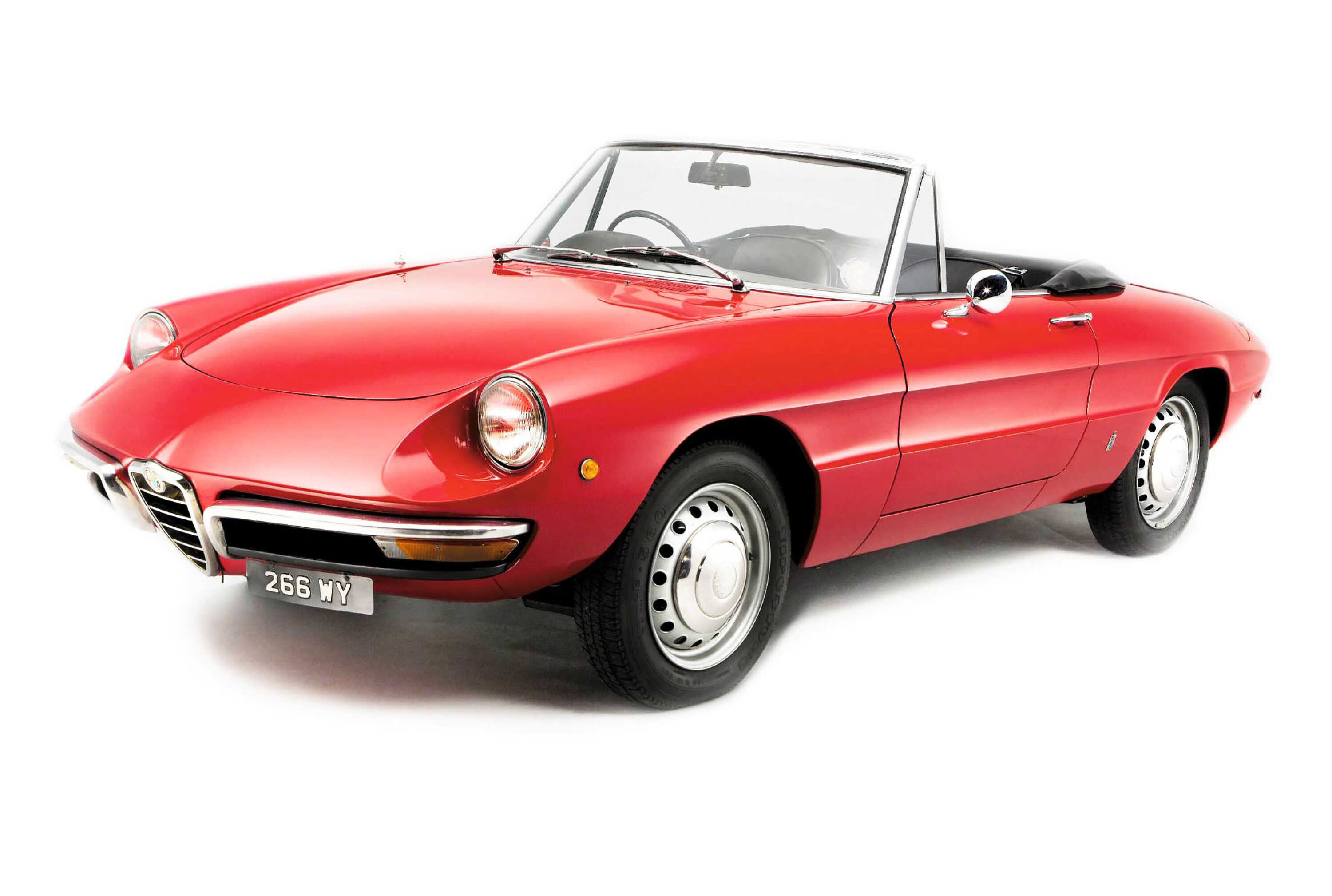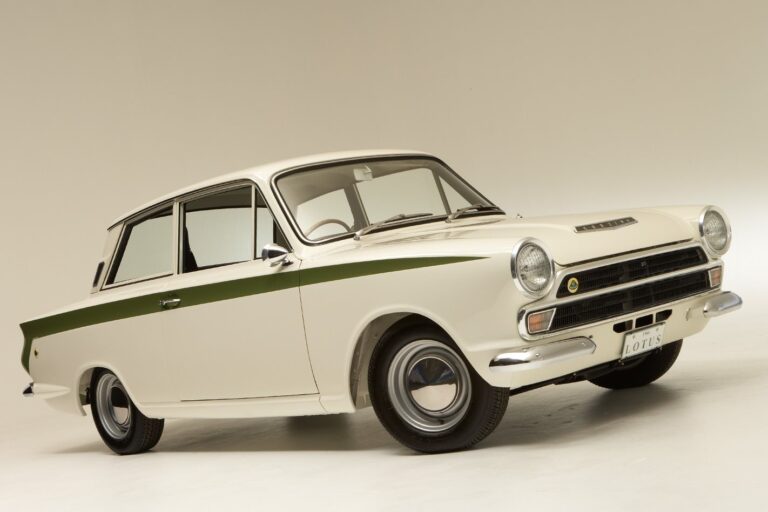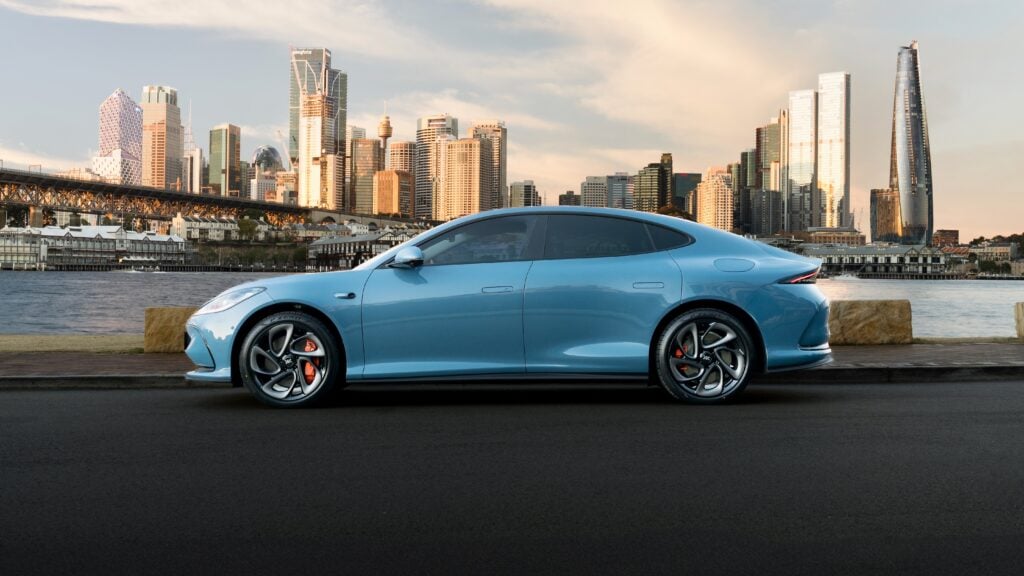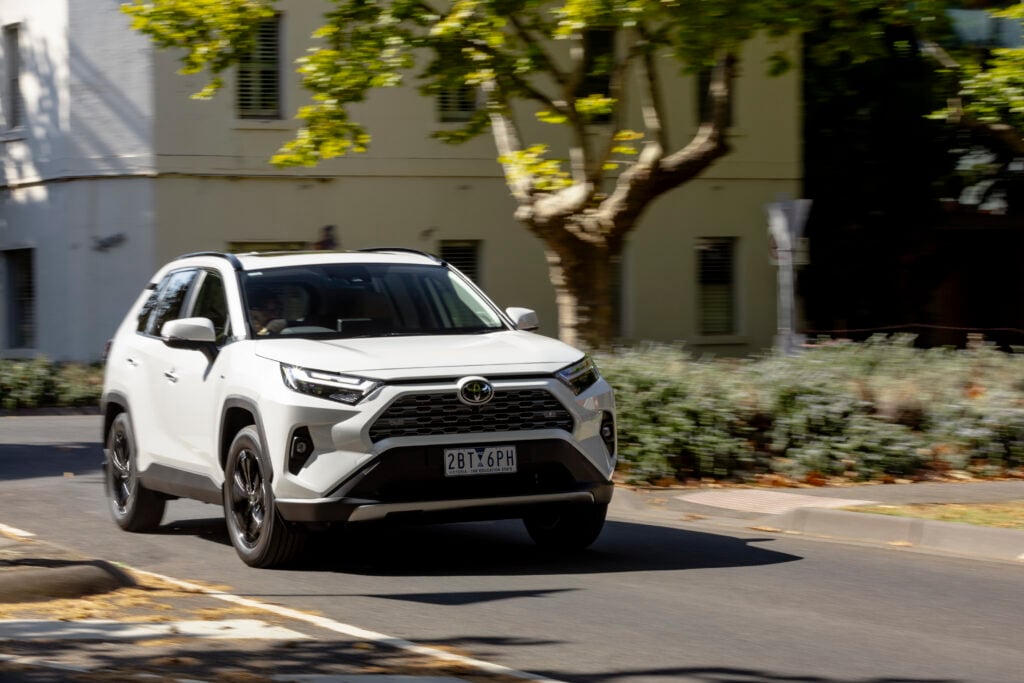Gina Lollobrigida and Brigitte Bardot may have had to farewell their film-star looks, but at 57 years young the Alfa Romeo 105/115-series Spider is now even sexier than the day it first bemused onlookers at the 1966 Geneva Motor Show.
Hard to imagine, but the Pininfarina-penned and produced Spider, quickly nicknamed osso di sepia (“cuttlefish bone”) was initially dismissed by the Italian press as an unworthy sister to its donor 105-series Giulia Berlina sedan.
‘Lollobrigida’ and ‘Bardot’ were in fact among the 140,000 entries in a 1966 competition to name the new 1600 Spider. Most popular was ‘Pinin’ – Battista ‘Pinin’ Farina had died within days of the car’s launch – but ‘Duetto’ was selected, until the maker of an Italian chocolate snack enforced its copyright after just 190 cars had been built.
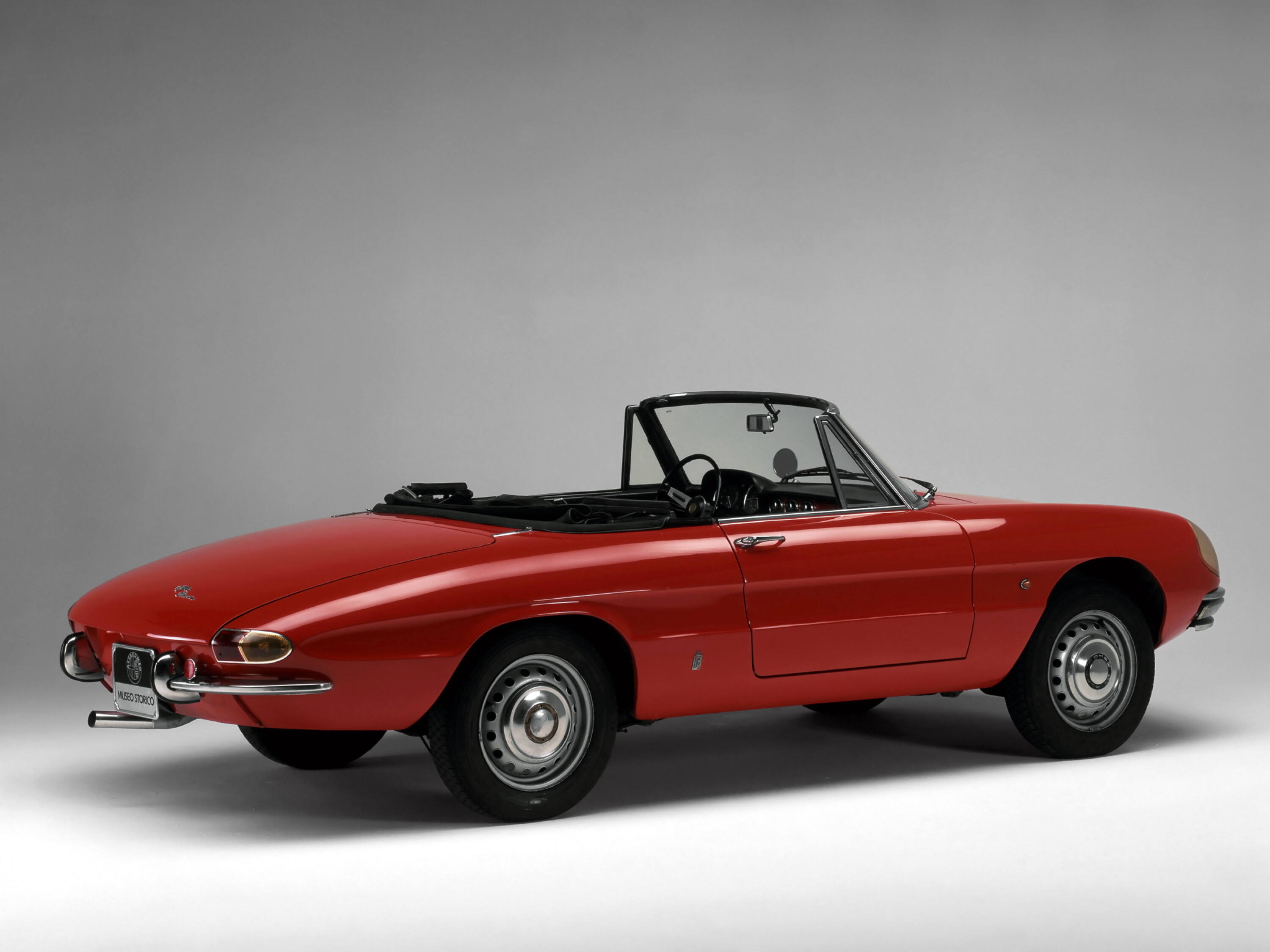
Soon enough, the 1600 Spider would be a movie star in its own right, carrying Dustin Hoffman in 1967’s The Graduate.
The Spider’s shape was inspired by a series of four Pininfarina Superflow concept cars between 1955-’60, based on an Alfa sports-racer platform. The production Spider platform and drivetrain would come from the acclaimed 105-series Giulia, on a wheelbase 10mm shorter than the iconic coupe.
The twin cam four was initially fitted in 1.6-litre guise and soon joined by the ‘1750’ (actually 1779cc) and a low-cost, sub-tax 1300 Junior. However, even the latter entry version came with twin Weber carbs, a five-speed manual ’box and four-wheel disc brakes.
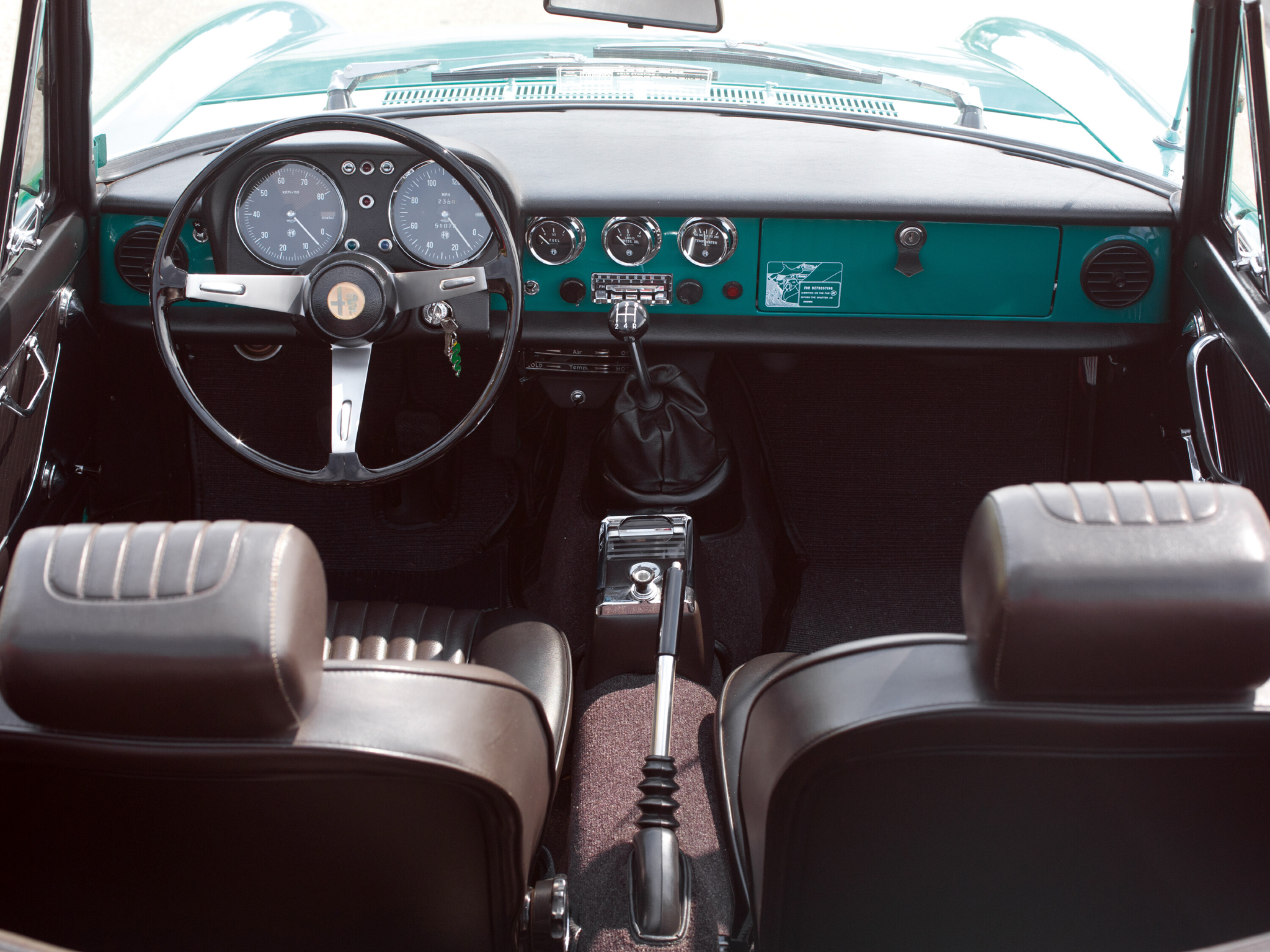
Despite a price not far shy of a Jaguar E-Type’s, the Spider delighted drivers with its light weight and quick handling.
It was most directly comparable with the Lotus Elan, both these cars in a class above mainstream British roadsters like the MGB and Triumph TR4 and indeed, the also Pininfarina-sourced Fiat 124 Spider that came later in 1966.
The Alfa underwent its most obvious revision in 1970 with the Kamm-tailed Series 2 coda tronca body, its squared-off tail further benefiting an already surprisingly useful luggage capacity. Later Series 3 ‘Aerodinamica’ cars (1983-’89) were corrupted to meet US 5mph bumper requirements, and finally Series 4 (1990) brought a sympathetic updating of the Spider’s nose and tail.
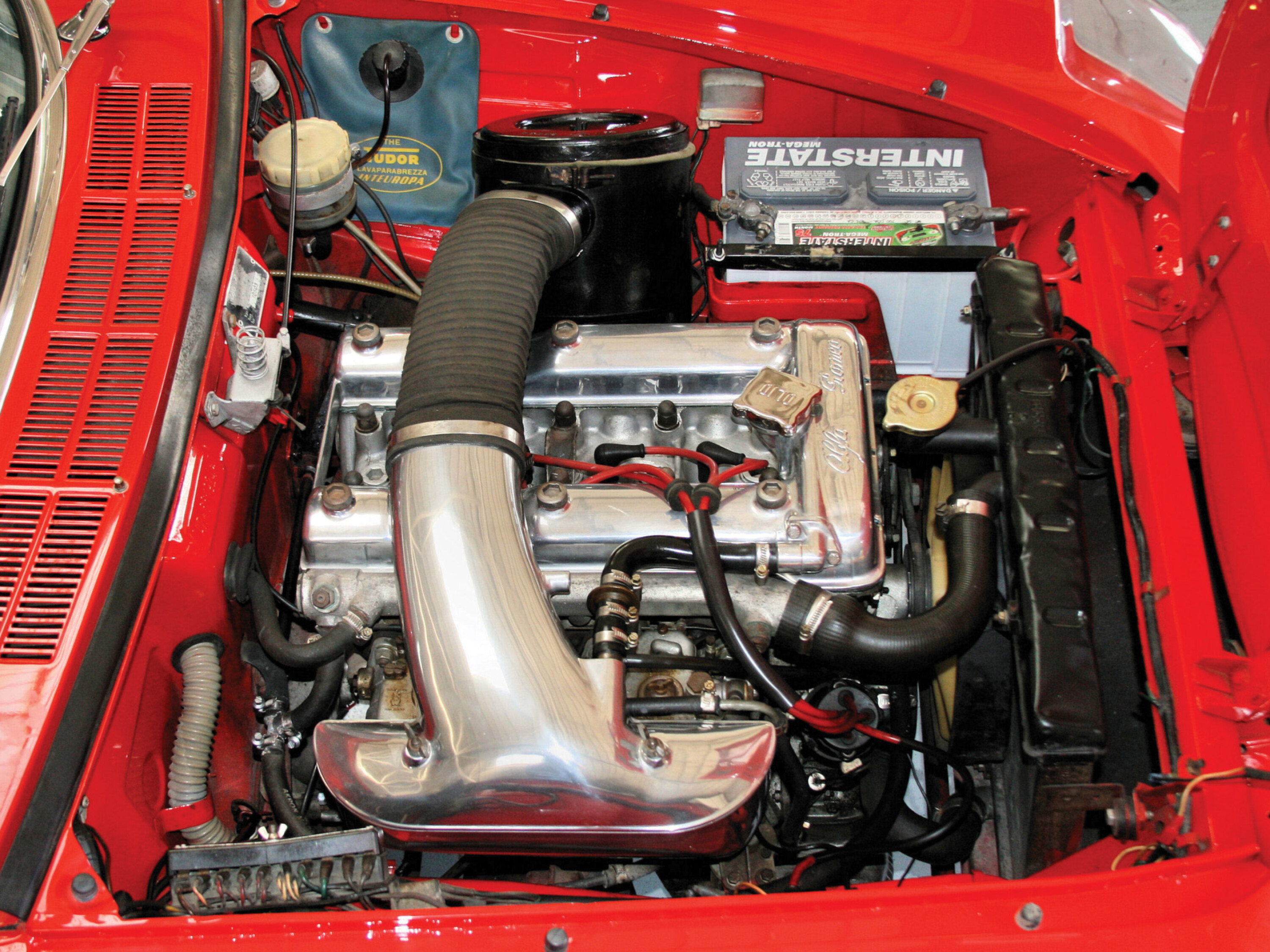
La Dolce Duetto
Alfa’s all-alloy, four-cylinder twin cam is an industry legend, launching in the 1954 Giulietta and remaining in production, with modifications including fuel injection and twin-spark cylinder head, for 40 years.
The 1600 Spider made 81kW and 139Nm; modest figures, but helped by a 990kg kerb weight. Later engine choices comprised the ‘1750’ (1967), 1.3 (1968) and ‘Veloce’ 2.0 (1971).
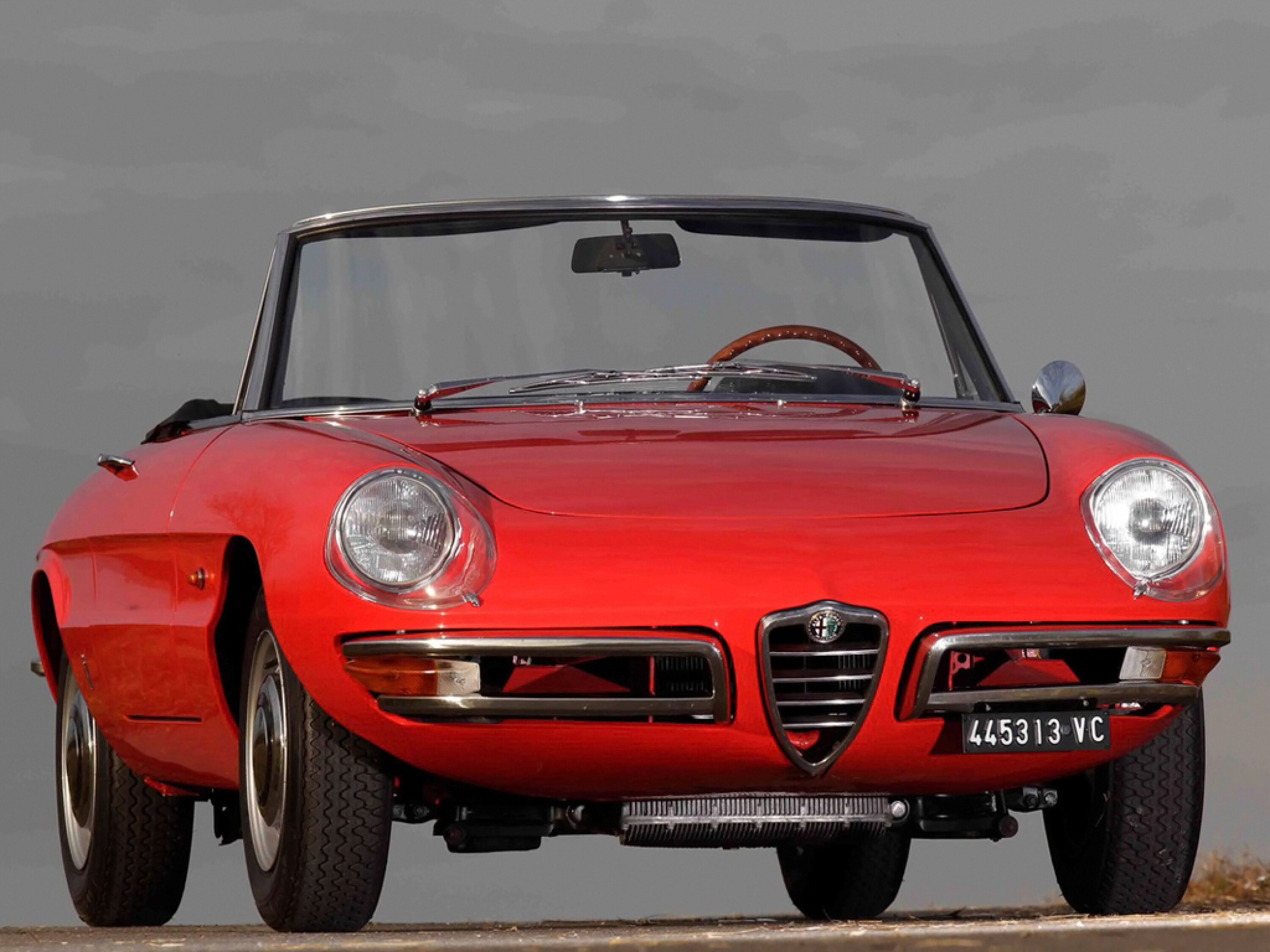
Vinyl revival
Everything to love about 1960s Italy is inside a ’60s Spider … long-armed/short-legged driving position, black vinyl upholstery, three-spoke wood-rim wheel (or plastic on base-spec), body-coloured steel dashboard, chrome or crackle finish surfaces, comprehensive instruments all torpedo-tubed towards the driver.
The manual soft-top was dead-easy to operate, fastening with two clips when up and out of view when folded.
| In detail | |
|---|---|
| 115 | series identification post-1974 |
| 17726 | production of Series 1 osso di sepia (1966-69) |
| 990 | kerb weight (kg) |
| 110126 | Total Spider production (1966-94) |
| 1976 | 105/115 Spider sales end in Australia |

